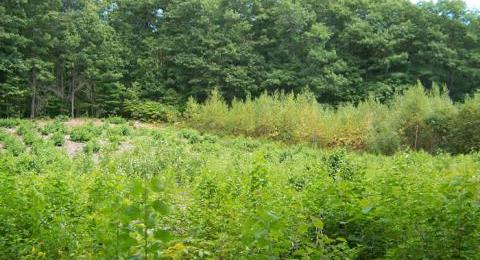
Shrubland habitats are used by over 100 species of wildlife in NH and are critically important to many. Despite their importance to wildlife, these habitats have become increasingly rare in NH and as a result, many of the species that use and/or rely on this habitat have shown declining population numbers in recent years.
The terms shrublands, early-successional habitat, and young forest are used to broadly describe those habitats characterized by a dense growth of shrub species and young trees mixed with scattered grasses and wildflowers. Without management, these habitats continue to grow until they become forests. If it's appropriate for your land, managing shrubland habitats will greatly benefit the wildlife in your area.
Where to create shrublands. Land managers often have to make decisions about where to create shrubland habitats. It is often most appropriate to create shrublands in the following locations (not a complete list) – field edges, fields too wet for other uses, fields no longer in agricultural production, forested areas with low potential for quality timber production, adjacent to power line corridors, adjacent to forested wetlands, or adjacent to beaver ponds.
Where you least expect…
Some of the most valuable shrubland habitats may be some of those we don’t consider as habitat at all:
- Power line corridors. These rights-of-way can provide valuable habitat to wildlife and are maintained through regular mowing with a brontosaurus by the power company
- Gravel pits. With little to no rich soils, restored gravel pits grow very slowly. This slow growth allows them to stay in a shrubby state much longer between management actions.


